The Unseen Edge: How Specialized Grip Socks Are Revolutionizing Soccer Performance.

Socks have always been part of a soccer player’s uniform, but grip socks are changing how people think about this basic item. In today’s competitive game, where every move counts, gear that improves traction, control, and stability is no longer optional—it’s expected. That’s where grip socks soccer designs come in.
These aren’t your standard training socks. By integrating anti-slip grips into the sole, they help players lock into their shoes better. The result is improved foot-to-shoe contact, less sliding inside the cleat, and fewer injuries caused by foot instability. Brands and retailers are paying attention—not just because players are asking for them, but because this demand is driving clear product differentiation.
The Science Behind Grip Socks in Soccer
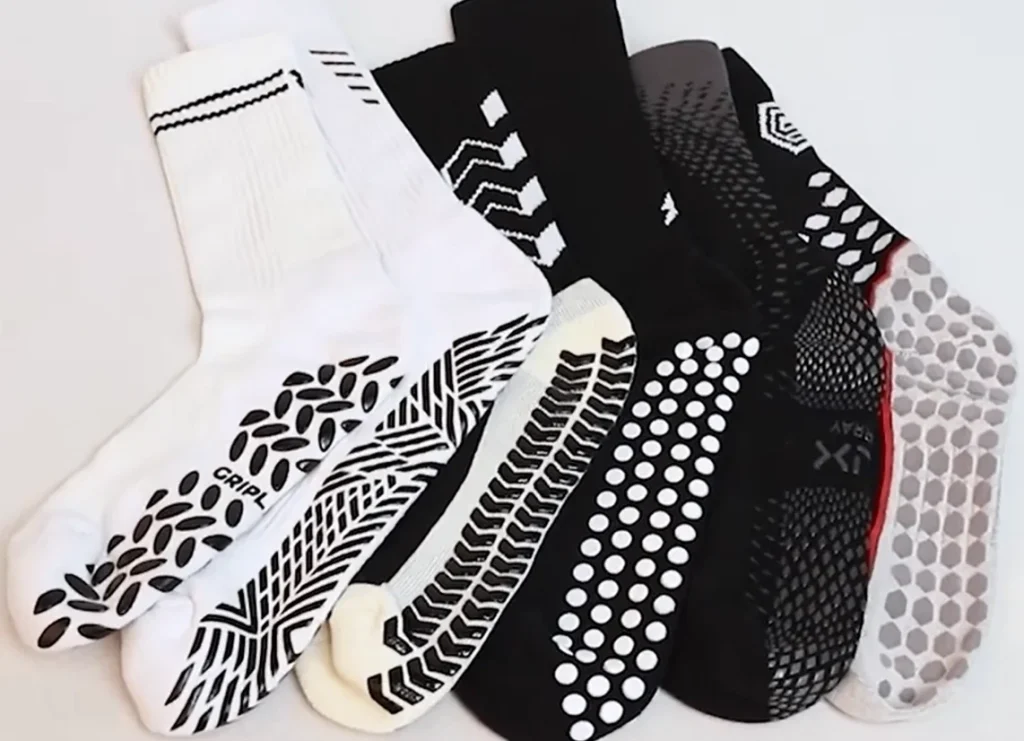
When players move, stop, pivot, or sprint, their feet naturally shift inside their cleats. This micro-slipping creates energy loss and increases the risk of blisters or rolled ankles. That’s where grip socks provide a measurable difference.
How Grip Socks Actually Work
At the core of every grip socks soccer design is a traction system—usually made of rubberized dots or textured yarns—strategically placed on the sole. These grip elements generate friction between the sock and the inner shoe. Some designs also extend grip to the top of the foot, reducing internal slip even further.
By anchoring the foot securely inside the cleat, players gain immediate response time, sharper direction changes, and stronger footing. In high-pressure situations like quick passes, last-minute tackles, or goal-scoring sprints, these micro-gains translate into real performance advantages.
Enhanced Muscle Efficiency and Joint Protection
Beyond traction, grip socks contribute to biomechanical efficiency. Reduced in-shoe slippage means muscles aren’t compensating for instability. This lowers the risk of calf fatigue and improves energy transfer from foot to ground. Over the course of a match, that can make the difference between maintaining control or breaking down physically.
It’s about helping players feel safer and more efficient in motion. The grip socks soccer category is no longer a side offering; it’s becoming part of the technical equipment conversation.
More Than Grip – Additional Benefits of Soccer Grip Socks
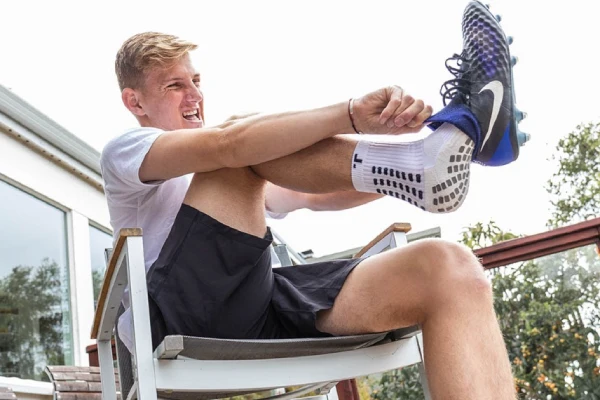
While the main function of grip socks for soccer is to improve traction inside the boot, these socks also offer important secondary benefits that impact player comfort and health.
Reduced Blister Risk Through Stabilization
When feet slide inside cleats, friction causes blisters and hotspots. Grip socks minimize this movement, protecting delicate skin and reducing downtime caused by painful foot injuries. This is especially valuable during long training sessions or multi-game tournaments.
Moisture Management for All-Day Comfort
Most grip socks use moisture-wicking fabrics designed to pull sweat away from the skin. This helps keep feet dry, lowering the chance of fungal infections and maintaining comfort under intense conditions. Dry feet also contribute to consistent grip, as moisture can reduce the effectiveness of traction zones.
Supportive Compression Features
Some advanced grip socks soccer models incorporate light compression. This supports blood circulation, which can reduce muscle fatigue and accelerate re covery. Compression also aids in stabilizing ankle joints, adding another layer of injury prevention.
Why Traditional Soccer Socks Are No Longer Enough


Traditional soccer socks have served players for decades, but they fall short in addressing the demands of modern high-performance footwear and intense gameplay. Plain cotton or basic synthetic socks offer minimal traction inside the cleat. This often leads to foot slippage, which can reduce power transfer and cause discomfort.
With the rise of lightweight, smooth-soled soccer boots, the gap between foot and shoe has become more noticeable. This increases the risk of blisters and decreases stability on the field. As a result, players and brands are turning toward grip socks soccer solutions that specifically target these issues.
Switching from traditional socks to grip socks is more than a comfort upgrade—it’s a necessary evolution to meet today’s standards for player safety and performance.
What to Look for When Choosing High-Performance Soccer Grip Socks

For brands, retailers, and clubs sourcing grip socks soccer, understanding key features helps ensure the right product selection.
Effective Grip Zones and Durable Materials
Look for grip patterns that cover critical foot areas such as the heel, forefoot, and toe. Materials like silicone or thermoplastic rubber provide lasting traction without quickly wearing down. Durability is essential to meet the demands of regular training and matches.
Breathability and Moisture-Wicking
High-quality soccer grip socks use breathable, moisture-wicking yarns to keep feet dry and comfortable. This not only supports performance but also helps maintain the effectiveness of grip zones.
Fit and Comfort Features
A snug, anatomical fit prevents internal slippage and enhances stability. Consider socks with arch support bands, seamless toes, and cushioned zones for added comfort during long hours on the field.
Length and Style Preferences
Grip socks come in various lengths, from ankle to knee-high. The choice often depends on player preference, team requirements, and how the socks integrate with shin guards.
By prioritizing these features, buyers can select grip socks that deliver performance, durability, and comfort to players at all levels.
Integrating Grip Socks Into Kits and Training Gear
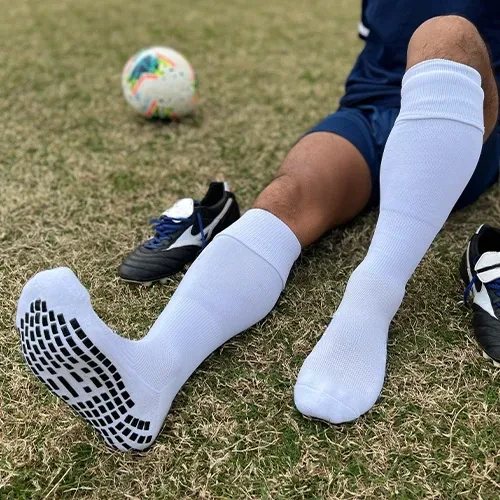
Incorporating grip socks soccer into a player’s gear is simple but essential for maximizing their benefits. Understanding how to wear, care for, and comply with regulations ensures the best experience for players and teams.
Kit Compatibility and Layering
Grip socks are designed to be worn directly on the skin for optimal traction. Some players choose to wear a thin liner sock underneath, but this can reduce grip effectiveness. When selecting socks, consider how they work with specific cleat models and shin guards.
Care Instructions for Longevity
To preserve the grip elements and fabric integrity:
- Wash socks inside out on a gentle cycle with cool water.
- Avoid fabric softeners, which can degrade the grip texture.
- Air dry or tumble dry on low heat to maintain elasticity.
Proper maintenance extends sock lifespan and keeps performance consistent.
League Rules and Compliance
Grip socks are legal in nearly all soccer leagues, as long as they meet color and safety guidelines. Ensure your team’s socks align with league uniform rules to avoid issues on match day.
By making grip socks a regular part of training and match kits, players gain a competitive edge while brands and retailers offer essential, trusted products.
Field Feedback – What Soccer Players Are Saying About Grip Socks
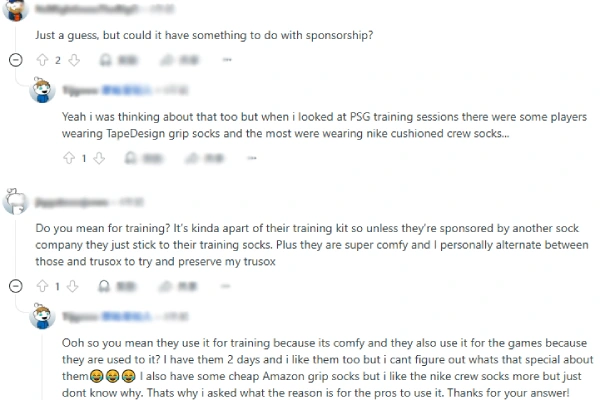
Across amateur leagues and professional teams, athletes consistently praise grip socks soccer for improving comfort, control, and on-field confidence.
One Premier League midfielder described his experience on The Athletic:
Better Fit, Better Focus
Grip socks significantly reduce micro-slippage inside the cleat, which means fewer blisters and less distraction. This secure fit allows players to concentrate fully on game tactics, not their feet.
Improved Agility and Psychological Edge
Trust in footwear translates into quicker reactions and bolder movements. As noted by a U.S. college coach in STACK:
“We’ve seen fewer foot complaints and more explosive movement since switching to grip socks.”
Moreover, industry data shows that over 70% of Premier League players now wear a grip sock setup under their team socks, indicating widespread professional adoption and trust in the product’s performance and mental benefits.
Choosing the Right Supplier: Why Max Hosiery Is Your Trusted Partner
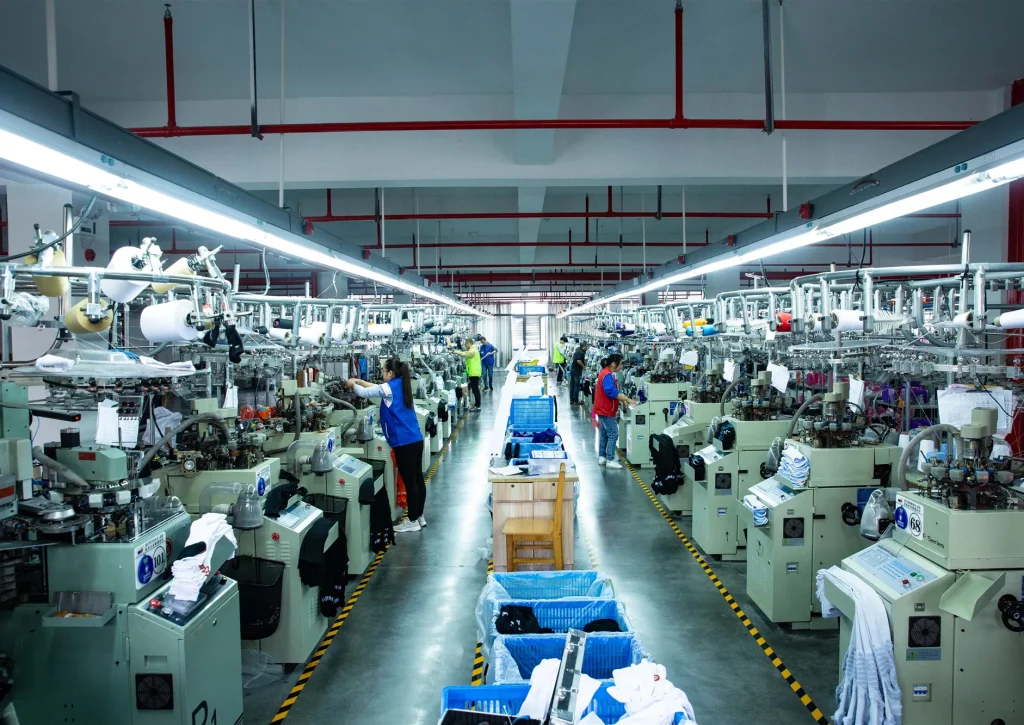
When sourcing grip socks soccer, partnering with the right supplier ensures product quality and timely delivery. Max Hosiery offers advanced grip sock technology, premium materials, and flexible customization options tailored to your brand’s needs.
With integrated manufacturing and trading capabilities, we provide reliable supply and competitive pricing.
To learn more about our factory and services, please visit our About Us page.
FAQs
What makes grip socks soccer different from regular soccer socks?
Grip socks feature rubberized or silicone traction zones on the sole that prevent foot slipping inside the cleat, unlike regular socks which offer little to no internal grip. This improves stability and power transfer during play.
How do grip socks improve a player’s performance on the field?
By reducing internal foot movement, grip socks enhance traction, enabling quicker cuts, stronger push-offs, and better balance. This leads to more precise, explosive, and confident play.
Are grip socks soccer suitable for players of all levels?
Yes, grip socks benefit everyone from amateur players to professionals by improving comfort, stability, and injury prevention.
Can grip socks help reduce foot injuries in soccer?
Yes, by minimizing foot slippage and friction inside the cleat, grip socks reduce blisters and lower the risk of ankle strains caused by instability.
Are grip socks allowed in official soccer matches and leagues?
Yes, grip socks are legal in almost all leagues, provided they conform to uniform color and safety guidelines. Always check specific league rules when in doubt.
